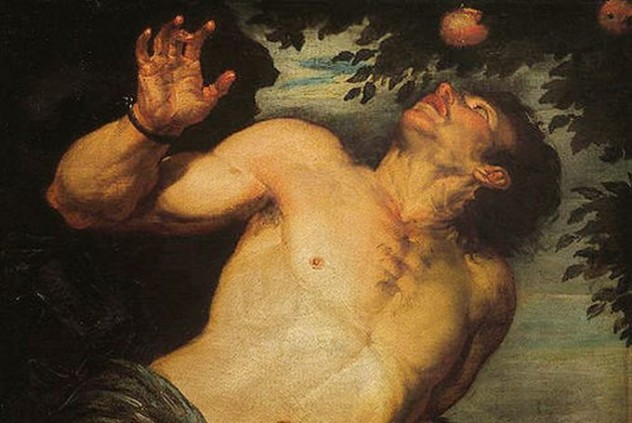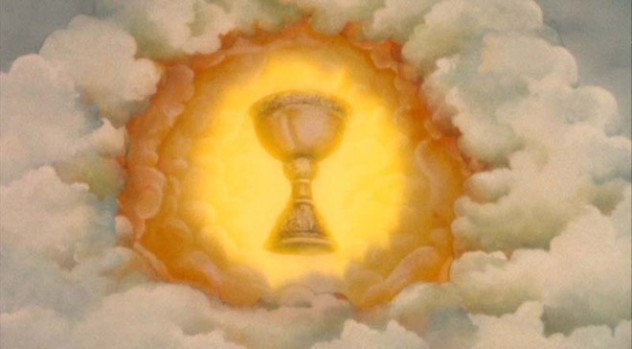 Weird Stuff
Weird Stuff  Weird Stuff
Weird Stuff  Our World
Our World 10 Ways Your Christmas Tree Is More Lit Than You Think
 Movies and TV
Movies and TV The 10 Coolest Stars to Set Sail on The Love Boat
 History
History 10 Things You Didn’t Know About the American National Anthem
 Technology
Technology Top 10 Everyday Tech Buzzwords That Hide a Darker Past
 Humans
Humans 10 Everyday Human Behaviors That Are Actually Survival Instincts
 Animals
Animals 10 Animals That Humiliated and Harmed Historical Leaders
 History
History 10 Most Influential Protests in Modern History
 Creepy
Creepy 10 More Representations of Death from Myth, Legend, and Folktale
 Technology
Technology 10 Scientific Breakthroughs of 2025 That’ll Change Everything
 Weird Stuff
Weird Stuff Ten Bizarre Facts About The Doge Meme
 Our World
Our World 10 Ways Your Christmas Tree Is More Lit Than You Think
 Movies and TV
Movies and TV The 10 Coolest Stars to Set Sail on The Love Boat
Who's Behind Listverse?

Jamie Frater
Head Editor
Jamie founded Listverse due to an insatiable desire to share fascinating, obscure, and bizarre facts. He has been a guest speaker on numerous national radio and television stations and is a five time published author.
More About Us History
History 10 Things You Didn’t Know About the American National Anthem
 Technology
Technology Top 10 Everyday Tech Buzzwords That Hide a Darker Past
 Humans
Humans 10 Everyday Human Behaviors That Are Actually Survival Instincts
 Animals
Animals 10 Animals That Humiliated and Harmed Historical Leaders
 History
History 10 Most Influential Protests in Modern History
 Creepy
Creepy 10 More Representations of Death from Myth, Legend, and Folktale
 Technology
Technology 10 Scientific Breakthroughs of 2025 That’ll Change Everything
10 Mythological Ways To Become Immortal
Immortality has always been a dream for humans; the desire to avoid death is universal, whether because of fear, a thirst for knowledge, or simply a love of living. However, many others tend to see it as a curse, with journalist Herb Caen saying: “The only thing wrong with immortality is that it tends to go on forever.” Immortality has long fascinated us humans, and because of that, it’s become intertwined with most mythologies.
10 Eat A Mermaid

In Japanese mythology, there was a mermaid-like creature known as a ningyo. Described as a cross between a monkey and a carp, they lived in the sea and would normally bring bad luck or stormy weather if caught. (If they washed up on shore, they were said to be an omen of war).
One particular myth involves a girl known as the “Eight Hundred Nun.” Her father accidentally brought her ningyo meat, and she ate it and was cursed with immortality. After years of sadness due to her many husbands and children dying, she devoted her life to Buddha and became a nun. Perhaps because of her holiness, she was allowed to die at the age of 800.
9 Taunt Jesus: Christian Mythology

In Christian mythology, there was said to be a Jewish man who taunted Jesus during his walk to be crucified by hitting him with his shoe and telling him to hurry up. Jesus then responded by telling him that even though he was leaving, the Jewish man would have to stay around until he returned.
Realizing what had transpired, the man took the name Joseph, converted to Christianity, and was baptized shortly afterward. However, the curse did come with some harmful side effects. He wasn’t allowed to sit or rest at any time, except for a brief respite on Christmas. And every 100 years, he would get incurably sick and go into a fit for an indeterminate amount of time, after which he would return to the age of 30.
8 Anger A God: Greek Mythology

A common theme in many Greek myths involving mortals was the punishment and danger of hubris, or extreme pride. Many mortals tried to trick or challenge the gods, and all were punished, many of them for all eternity. Earlier in his life, Sisyphus tried to trick Zeus and trapped Thanatos, the personification of death in Greek mythology. This led to a world where no one could die, which really bothered Ares, the god of war.
So he was punished by having to roll a boulder up a hill every day, only to have it roll back down every night. Another story involves King Ixion who, already in trouble for murdering his father-in-law, went to Zeus for forgiveness. While on Mt. Olympus, he made the mistake of trying to rape Hera. Zeus found out and tricked Ixion with a cloud in the shape of the goddess. He was punished by being strapped to a flaming wheel forever.
7 Cinnabar: Taoism

Cinnabar is the common ore of mercury and a central ingredient to the Taoist elixir of immortality, which was called huandan (or “Reverted Elixir”). They believed ingesting certain materials, such as cinnabar or gold, would instill some of their qualities and rid the body of the imperfections which kept it from obtaining immortality.
Unfortunately, most of the items which were ingested were poisonous, and many people died, including many of the Tang Dynasty emperors. Eventually, the idea of “External Alchemy” was changed to “Internal Alchemy,” which was a way of harnessing one’s natural energy through yoga and other practices in the hopes of gaining immortality.
6 An Unknown Plant: Sumerian Mythology

In The Epic of Gilgamesh, the hero is searching for the source of immortality due to distress after his friend Enkidu dies, making him fear his own death. His quest leads him to Utnapishtim, a Noah-like figure who was granted immortality when he built a large boat at the gods’ instructions to survive a great flood. Utnapishtim tells Gilgamesh that his immortality was a special gift, but there’s a plant of unknown origin and species, which could be eaten to achieve eternal life. His description is similar to a buckthorn or a boxthorn, depending on the source. However, after finding it, Gilgamesh loses the plant to a snake, so we’ll never know if it would’ve worked.
5 Peaches Of Immortality: Chinese Mythology

The Peaches of Immortality play a very large role in the Chinese epic Journey to the West. Sun Wukong, the Monkey King, was chosen as the Protector of the Peaches and ended up consuming one of them, which bestowed upon him 1,000 years of life. He escaped at first, but was later captured. Of course, since he had also eaten the Pills of Immortality, Sun Wukong was unable to be executed.
He eventually went to war against Heaven and the gods had to turn to the Buddha, who managed to trick Sun Wukong and trap him for five centuries, after which he went on the quest outlined in Journey to the West. The Jade Emperor and his wife, Xi Wangmu, were said to be the planters of the peach tree, which only gave ripened fruit every 3,000 years. They gladly gave it to the other gods in order to keep them living forever.
4 Amrita: Hinduism

Amrita is a Sanskrit word which almost literally translates to “immortality” in English. The Devas, or gods, were originally mortal or lost their immortality because of a curse and sought a way to obtain eternal life.
They teamed up with their enemies, the Asuras, or anti-gods, to churn the Milk Ocean and create a nectar called amrita. The Devas ended up tricking the Asuras into not drinking any of it by having Vishnu disguise himself as a female goddess who could instill an uncontrollable lust in anyone’s heart. Yoga masters are said to be able to drink the amrita because the Devas spilled some of it in their rush to keep it from the Asuras.
3 The Golden Apples: Norse Mythology

The Norse Golden Apples are different from their Greek counterparts because they’re extremely important to the Norse deities. All of the Norse gods needed the apples to maintain their immortality and eternal youth, and Idun, the goddess of spring, was the keeper of their orchard.
When she was tricked by Loki and handed over to the giant Thiassi, along with the apples, the Norse gods began to grow old and their power waned. With their last bit of strength, they forced Loki to retrieve Idun and the apples. He transformed himself into a falcon, retrieved Idun and the apples, and the gods regained their youth.
2 Ambrosia: Greek Mythology

Ambrosia is the drink of the Greek gods. Said to taste like honey, ambrosia was delivered to the Olympians by doves and was the source of their immortality.
Various mortals and demigods were given the privilege of drinking of it, like Heracles, while some stole it and were punished, like Tantalus—who was trapped in a pool of water, with food always just out of reach. His name and story is the origin of the English word “tantalize.” Others almost tasted it but were turned away at the last moment, such as the hero Tydeus, who was going to be made immortal by Athena, until the goddess caught him eating human brains.
1 The Holy Grail: Christian Mythology

One of the most well-known pieces of Christian mythology is the Holy Grail. It’s the cup (or bowl) which Jesus drank from during the Last Supper, and it was a widely sought-after relic. It was also believed to be the container with which Joseph of Arimathea caught Christ’s blood as Christ was on the cross.
King Arthur and his knights journeyed far and wide, searching for the Holy Grail. Only the purest souls were able to grasp it, and Sir Galahad was said to have gained immortality by virtue of being the only man able to touch it.








